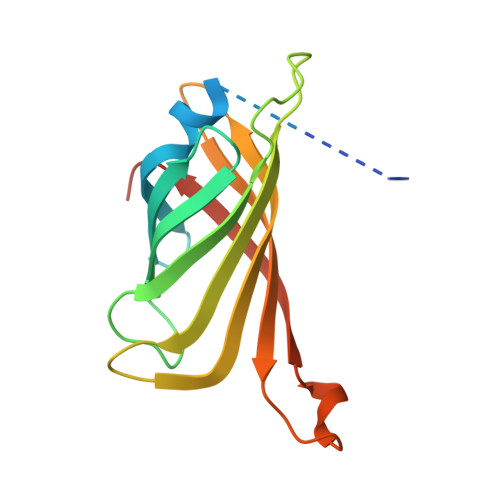Evolved streptavidin mutants reveal key role of loop residue in high-affinity binding.
Magalhaes, M.L., Czekster, C.M., Guan, R., Malashkevich, V.N., Almo, S.C., Levy, M.(2011) Protein Sci 20: 1145-1154
- PubMed: 21520321
- DOI: https://doi.org/10.1002/pro.642
- Primary Citation of Related Structures:
3RDM, 3RDO, 3RDQ, 3RDS, 3RDU, 3RDX, 3RE5, 3RE6 - PubMed Abstract:
We have performed a detailed analysis of streptavidin variants with altered specificity towards desthiobiotin. In addition to changes in key residues which widen the ligand binding pocket and accommodate the more structurally flexible desthiobiotin, the data revealed the role of a key, non-active site mutation at the base of the flexible loop (S52G) which slows dissociation of this ligand by approximately sevenfold. Our data suggest that this mutation results in the loss of a stabilizing contact which keeps this loop open and accessible in the absence of ligand. When this mutation was introduced into the wild-type protein, destabilization of the opened loop conferred a ∼10-fold decrease in both the on-rate and off-rate for the ligand biotin-4-fluoroscein. A similar effect was observed when this mutation was added to a monomeric form of this protein. Our results provide key insight into the role of the streptavidin flexible loop in ligand binding and maintaining high affinity interactions.
Organizational Affiliation:
Department of Biochemistry, Albert Einstein College of Medicine, Bronx, New York 10461, USA.


















